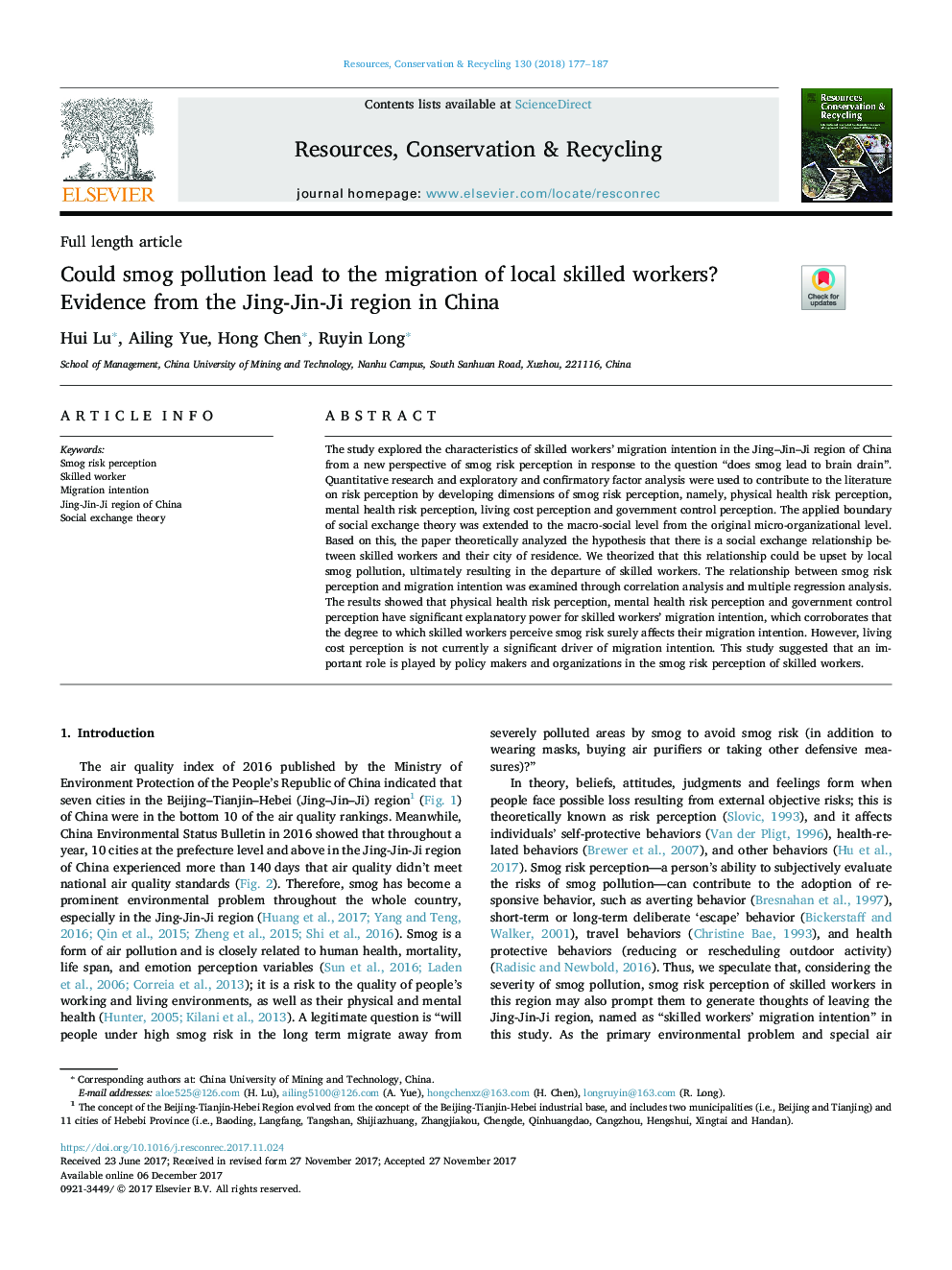| Article ID | Journal | Published Year | Pages | File Type |
|---|---|---|---|---|
| 7494459 | Resources, Conservation and Recycling | 2018 | 11 Pages |
Abstract
The study explored the characteristics of skilled workers' migration intention in the Jing-Jin-Ji region of China from a new perspective of smog risk perception in response to the question “does smog lead to brain drain”. Quantitative research and exploratory and confirmatory factor analysis were used to contribute to the literature on risk perception by developing dimensions of smog risk perception, namely, physical health risk perception, mental health risk perception, living cost perception and government control perception. The applied boundary of social exchange theory was extended to the macro-social level from the original micro-organizational level. Based on this, the paper theoretically analyzed the hypothesis that there is a social exchange relationship between skilled workers and their city of residence. We theorized that this relationship could be upset by local smog pollution, ultimately resulting in the departure of skilled workers. The relationship between smog risk perception and migration intention was examined through correlation analysis and multiple regression analysis. The results showed that physical health risk perception, mental health risk perception and government control perception have significant explanatory power for skilled workers' migration intention, which corroborates that the degree to which skilled workers perceive smog risk surely affects their migration intention. However, living cost perception is not currently a significant driver of migration intention. This study suggested that an important role is played by policy makers and organizations in the smog risk perception of skilled workers.
Keywords
Related Topics
Physical Sciences and Engineering
Energy
Renewable Energy, Sustainability and the Environment
Authors
Hui Lu, Ailing Yue, Hong Chen, Ruyin Long,
